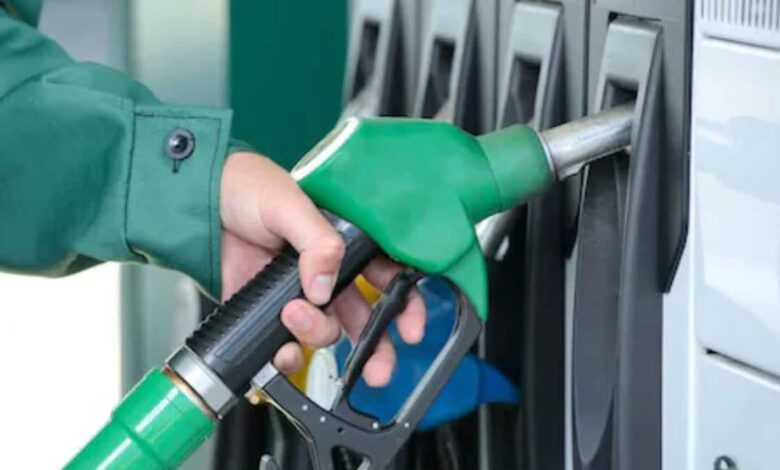Headroom to Cut Petrol, Diesel Prices by Rs 2-3 per Litre: Icra

Even as crude oil prices are at their lower levels improving margins on retail auto fuels, it provides oil marketing companies (OMCs) a headroom to cut petrol and diesel prices by Rs 2-3 per litre, rating agency Icra said on Thursday.
The price of a basket of crude oil India imports averaged $74 per barrel in September, down from about $83-84 a barrel in March when petrol and diesel prices were last cut by Rs 2 per litre.
In a note, Icra said the marketing margins on retail sales of auto fuels for the Indian Oil Marketing Companies (OMCs) have improved in recent weeks with the reduction in crude prices.
The rating agency anticipates that there is headroom for the downward revision of retail fuel prices if crude prices remain stable at current levels.
Girishkumar Kadam, Senior Vice President and Group Head, Corporate Ratings, ICRA, said: “ICRA estimates that the OMCs’ net realisation was higher by Rs 15 per litre for petrol and Rs 12 a litre for diesel vis-à-vis international product prices in September 2024 (till September 17). The retail selling price (RSPs) of these fuels have been unchanged since March 2024 (Rs 2/litre was reduced on petrol and diesel on March 15, 2024) and there appears to be headroom for their downward revision by Rs 2-3 per litre, if crude prices remain stable”.
Crude prices have witnessed a sharp decline in the last few months, primarily due to weak global economic growth and high US production and the OPEC+ has pushed the rollback of its production cuts by two months to combat the declining prices.
A decline in the price of crude oil — which is converted into fuels like petrol and diesel at refineries — had rekindled hopes for a reduction in petrol and diesel rates that have been on a freeze for over two years now barring a pre-election reduction in March.
While petrol and diesel pricing is deregulated (meaning oil companies have the freedom to fix retail rates), the state-owned fuel retailers, Indian Oil Corporation (IOC), Bharat Petroleum Corporation Ltd (BPCL) and Hindustan Petroleum Corporation Ltd (HPCL), have rarely used this freedom since late 2021 by not revising prices in line with cost.
They stopped daily price revision in early November 2021 when rates across the country hit an all-time high, prompting the government to roll back a part of the excise duty hike it had effected during the pandemic to take advantage of low oil prices.
The freeze continued into 2022 but the war-led spike in international oil prices prompted a Rs 10 a litre hike in petrol and diesel prices from mid-March 2022 before another round of excise duty cut rolled back all of the Rs 13 a litre and Rs 16 a litre increase in taxes on petrol and diesel done during the pandemic.
That followed the current price freeze which began on April 6, 2022, and continued till March 15 reduction. Thereafter there has been a freeze in rates again.
Petrol costs Rs 94.72 per litre in the national capital and diesel comes for Rs 87.62 a litre.
Icra said the Singapore Gross Refining Margins (GRMs) witnessed significant moderation in the first half of the 2024-25 fiscal (April 2024 to March 2025) to about USD 4 per barrel due to a drop in crack spreads with higher product output and reduced demand.
The impact is mainly on account of weak demand from China due to rising electric vehicle (EV) sales, muted industry demand and real estate downturn. Further, demand in Europe has also been subdued due to weak industrial activity and a structural shift in vehicle fleets towards EVs, it said.
“A marketing gain of Rs 1 per litre on petrol and diesel would compensate for the GRM loss of USD 0.9 per barrel for the domestic refining and marketing industry,” Icra said.
Commenting on the OMCs’ profitability, Kadam said: “The OMCs reported healthy operating margins in FY2024 (April 2023 to March 2024), recouping the losses incurred during FY2023. Despite moderation in the GRMs, the improvement in marketing margins is likely to result in the OMCs maintaining their profitability in H1 FY2025”.
However, inventory losses due to a sharp decline in crude prices could impact profitability to an extent in Q2 FY2025. Further, the profitability for standalone refiners would take a hit with the declining GRMs.
Icra’s outlook on the refining and marketing sector remains Stable.
Petroleum, Oil & Lubricants (POL) consumption in India witnessed year-on-year growth of 5 per cent in FY2024 and is likely to witness a 3-4 per cent growth in FY2025, driven by economic progress, increasing mobility and air travel.
The OMCs have planned a significant capex in the refining segment.
The domestic refining capacity is expected to increase to 306 million tonne over the next three to four years from the current capacity of 256.8 million tonne as of March 2024 to support the increased consumption and exports, Icra said expecting the capacity utilisation of the PSU and the private refiners to remain healthy in FY2025.
(With PTI Inputs)


